*Online Marketing
How to calculate the value of your average website visitor

What is a website visitor worth? What is the Return On Investment of your online marketing? Unlike many marketing channels, it’s possible to quantify the value of a website or online marketing. Even without annoying cookie notifications and expensive tools, you can explain what your website or online marketing brings in. In this article, we discuss more than just the technical basics and setting up analytics programs. After reading this article, you’ll approach online marketing with 100% results-oriented focus. And you’ll be able to explain or justify it to anyone, even to those who aren’t familiar with the field.

Met een eenvoudig dashboard sturen op resultaat online marketing
In the first part of the article, we discuss why you should assign value to the behavior of your website visitors. In the second part, we explain how to do that. The end result is a fully automated – and easy! – system that assigns a value to each visitor, allowing you to make informed decisions.
Return on Investment of your website and online marketing.
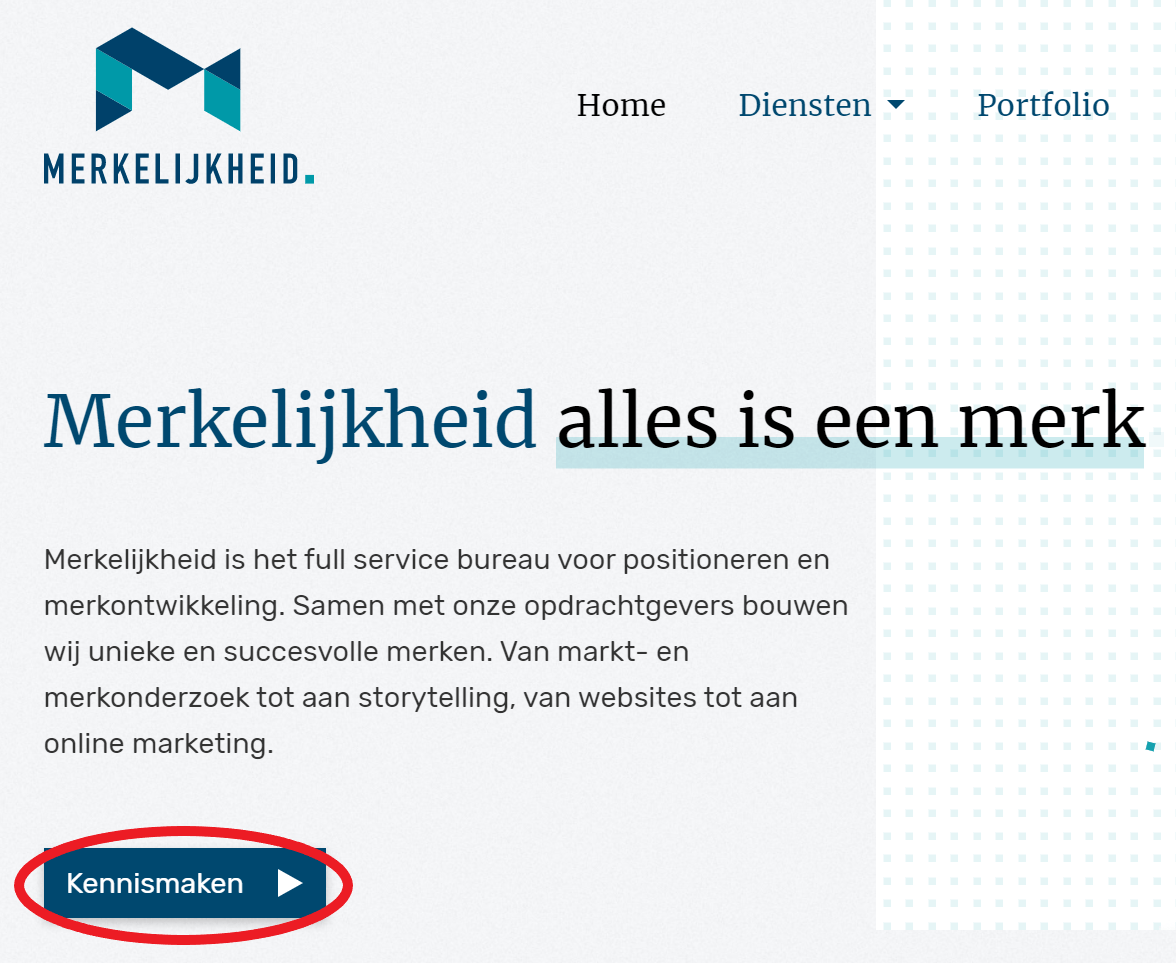
What does one euro invested in your website and online marketing yield? Definitely more than one euro, but a clear answer often remains elusive. And that’s not surprising because many companies either cannot or do not want to sell their products online. In many cases, the best outcome is a filled-out quote form or the contact information of a lead.
As a result, it’s often challenging to say, “This is what our website or online marketing has generated.”
But it gets even more challenging when you have to choose between two actions: “Do I spend €1,000 on LinkedIn ads or Google Ads?” How do you make this choice? If you order a machine, you probably consider the payback period, revenue and profit potential, and ROI. So why should it be different for online marketing?
Consciously and Purposefully Investing in Online Marketing or Website
Your website is the foundation of your online marketing, primarily because you have control over what a visitor sees here. This allows you to guide potential customers in their purchasing process (towards your product or service). Other channels will always charge (high) costs for this. You can also assign a value to the behavior of each visitor. With that value, you can determine the ROI of a specific campaign, action, or advertisement. If the behavior of the X acquired visitors has a value of Y, calculating the ROI should no longer be difficult.
But you need to know what behavior needs to be measured and what value it holds.
Determining Desirable Behavior
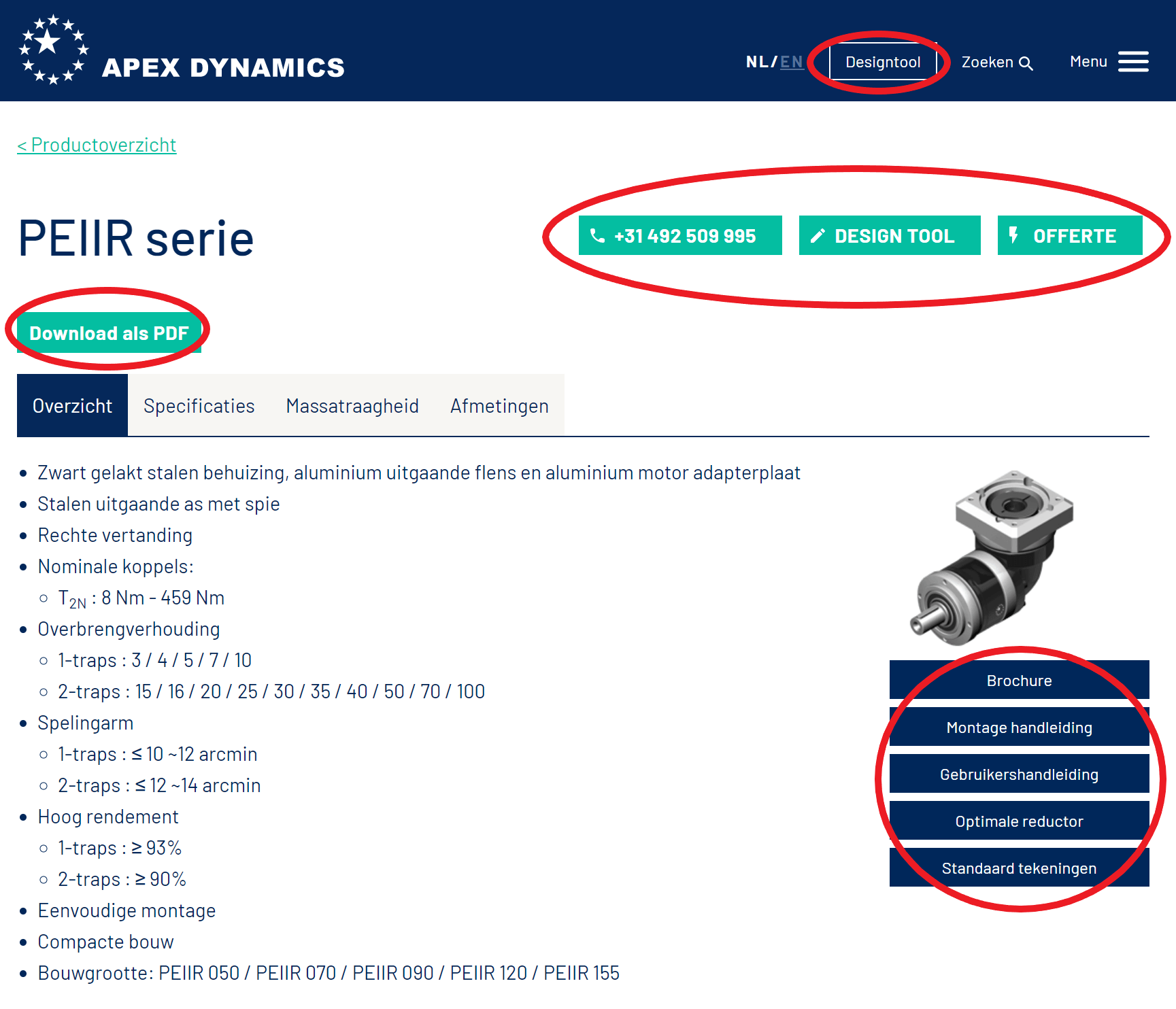
Op één pagina staan soms al 8 wenselijke acties (bron)
The activities you want website visitors to perform, in other words, desirable behavior, are what matters. Here are some examples of desirable behavior:
– Clicking on an icon linking to your company’s Facebook page
– Clicking on the phone number to get in touch
– Downloading a PDF file
– Submitting a fully completed contact form
– Selling and directly completing the purchase of your product
If there are no or very few valuable actions, that’s the first step to take: what can your website achieve?
What constitutes a valuable action naturally varies from business to business or website to website. That’s why you need to determine this specifically for your website. Make a list of all possible actions to which you could assign a value.
Assigning Value to Visitor Actions
Once you have listed all possible and valuable actions on your website, it’s important to assign a value to them. This is easy for the sale of a standardized product, but what is downloading a brochure worth? When we talk about value, we mean the number that best represents the economic value of a particular action:
Actions further away from a sale, such as a Facebook visit, a phone call, or a newsletter signup, are more challenging to quantify. We often start with a lower number and adjust it as we learn. How do you learn the value of a specific action? In the case of a phone call, there are several possibilities:
– Special phone numbers on the website. Using the same area code but not your “standard” number, you can direct people to specific numbers for specific actions. You’ll receive a report each month or week with the number of calls made to each number. This is also useful for a one-time promotion campaign.
– Have receptionists keep track of why people are calling. Let employees ask, “How did you hear about us?” Involve employees in the search for value and the source of new customers.
– Implement a special “call us” module, where people have to choose the purpose of their call before seeing a number.
Once you know why people are calling, it’s easier to assign an average or specific value to a phone call.
Calculating the Value of a Website Visitor
The next step is simple: addition. By adding up the values of all actions taken by a particular visitor, you calculate the value of that website visitor.
Steering Based on the ROI of a Channel, Campaign, or Action
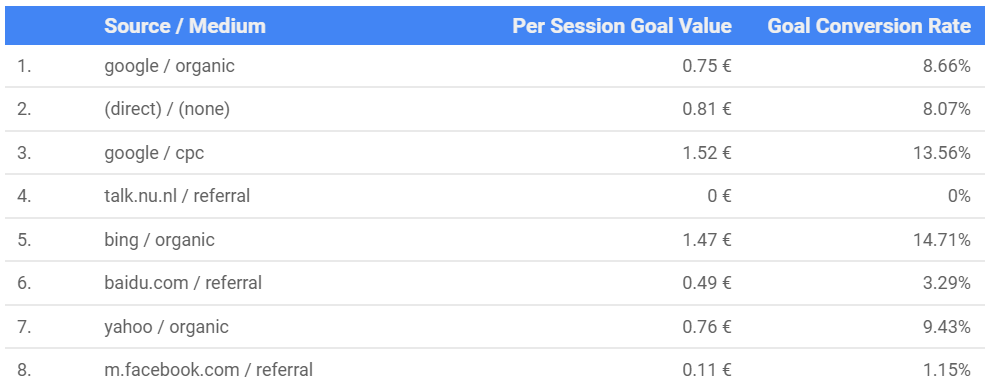
Bijvoorbeeld de gemiddelde waarde of conversieratio van een bezoeker is per kanaal of campagne inzichtelijk
Calculating the Return on Investment (ROI) of a channel, campaign, or action involves adding up the value of all visitors who came to your site through that action and subtracting the costs. Be sure that you can clearly distinguish different campaigns – for example, by giving each one a unique identifier – and that you can actually compare them.
To return to the brochure example, where a brochure has a value of €100.00:
– You’ve created a landing page for your product with the primary Call to Action being a request form for the brochure.
– Via LinkedIn, you’ve spent €350 in total to send 100 visitors to this landing page. Five of them request a brochure, and the visitors perform other actions worth €50, mainly subscribing to the newsletter.
– Through Google Ads, you spend the same €350 to send a total of 380 visitors to the same landing page, of which 4 request a brochure, and other actions worth €90 are performed.
The result of the LinkedIn campaign is much higher than that of the Google Ads campaign. Based solely on ROI, the LinkedIn campaign would therefore be preferred.

Hoeveel leads zijn er nodig om deze campagne de moeite waard te maken?
If you solely focus on the value of actions, you leave out more abstract aspects, such as brand awareness or the visibility of your brand or the market’s familiarity with your product, for example. In the example, an additional 280 people came to the page through Google and thus (partially) got to know your brand and product. This also has value and deserves a place in the ROI calculation.
But in any case, we hope it’s clear that calculating the value of a visitor provides more insight into the quality of certain channels or the success of an action. And you can also communicate this to colleagues or other stakeholders. The only remaining question is the implementation – how do you achieve this?
Technical implementation: what do you need to do for this?
Most people use Google Analytics to monitor their website traffic. It’s a program from Google, the leading search engine, and it’s also free. While Google Analytics provides a lot of data, it’s not designed to track every action on every website. For this, you need a different system, and Google realized this too, which is why they developed Google Tag Manager.
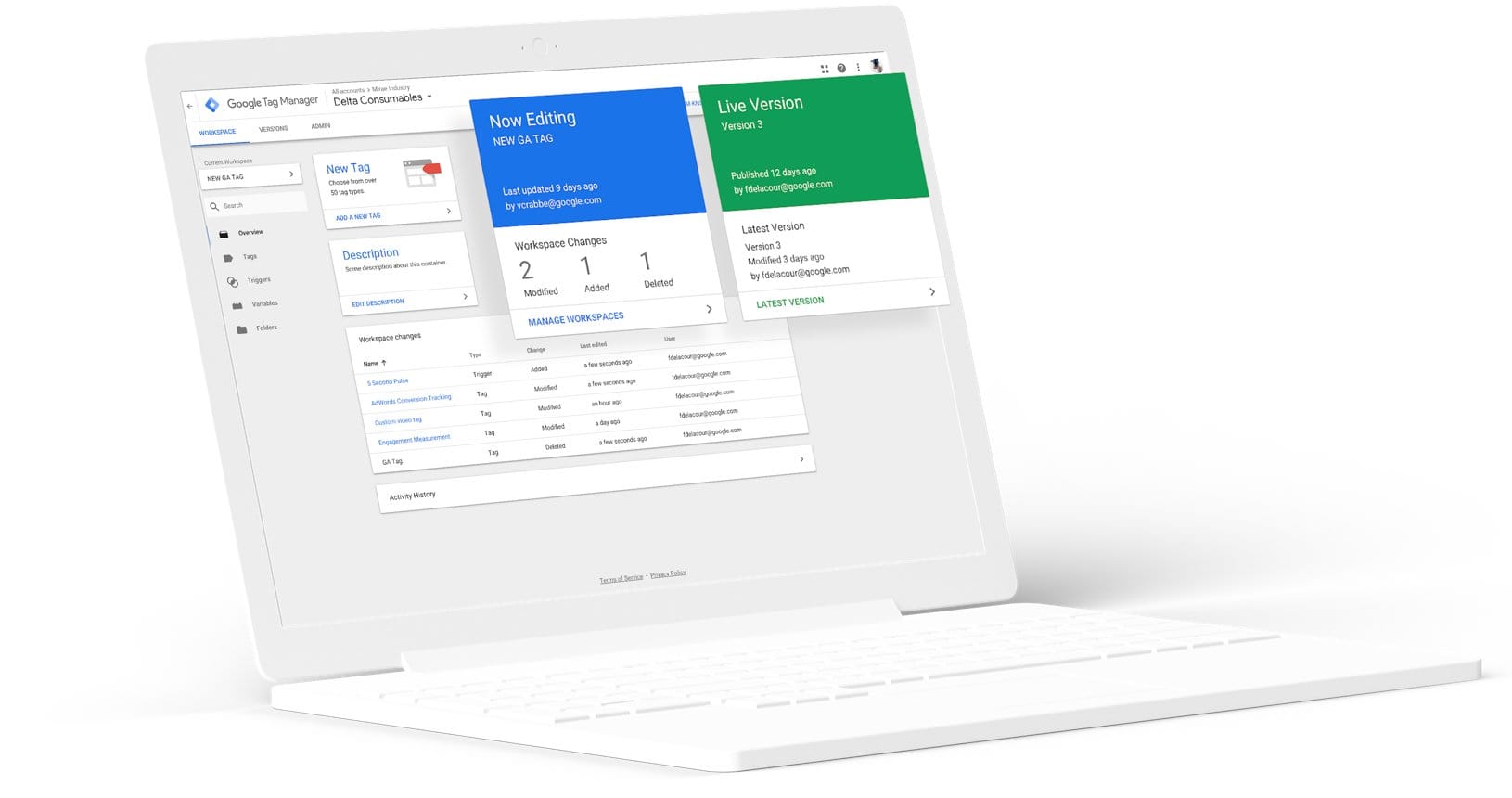
Eenmaal Tag Manager ingericht scheelt het veel werk (bron)
Using Google Tag Manager, you identify a unique user and assign a “trigger” to each action. Through “tags,” you can send these actions to other tools such as Google Analytics, Facebook, LinkedIn, or Google Ads. These programs are used to analyze all actions and user behavior.
Setting up Google Tag Manager
You set up Google Tag Manager so that:
- Programs like Google Analytics can analyze the behavior of your visitors (if desired, anonymously).
- Each action is associated with a trigger.
- The correct value is assigned to each trigger to avoid errors and distorted comparisons when comparing multiple channels.
- Tags are added to ensure that each action is recorded in the analysis program you use (such as Google Analytics).
The second step requires technical (programming) knowledge. For an optimal implementation, it’s necessary to make adjustments to the code of your website. An experienced developer should be able to handle this in about a day for a typical B2B site, depending on the number of triggers.
Next step: Categorizing tags and goals
Even on a simple website, you may quickly find it challenging to manage the different tags and actions, such as five social media actions, 12 brochure downloads, newsletter sign-ups, various contact forms, and more. How can you make this manageable?
To prevent an overwhelming list of different tags, we recommend categorizing them. This can also be done in Google Tag Manager, and it offers several clear advantages.
Benefits of categorization through Google Tag Manager:
- Each list of categorized tags can be used in any tool, ensuring uniformity across different tools.
- A category can serve as a goal, providing one practical KPI for your site.
- You won’t have a long list of different tags but rather an organized list per category.
- This approach makes it easy for universal and clear reporting and analysis of website results.
Our 5 categories in Google Tag Manager
We categorize all goals into five categories:
- Referral: Actions like clicking on a link, such as to your Facebook page or the source of an article. Sharing an article on social media falls into this category because you click on a link to share the article.
- Contact: Any action that can lead to contact with your brand or organization. Clicking on an email link, phone number, WhatsApp button, chat, and so on. These actions typically don’t involve obtaining contact information from the other party, which belongs to conversions.
- Downloads: This category includes actions where users download something without sharing contact or personal information. For example, offering a brochure, manual, or installation guide for download.
- Conversions: A significant step in the sales process is when a visitor provides personal or contact information. With this information, you can take action and guide the customer toward a sale. This category includes actions like submitting job applications.
- Sales: Actions that directly result in a sale. This category is more common in B2C environments where the average purchase value is lower.
In practice: Google Analytics
A fully implemented setup of triggers and tags categorized and then applied to goals in Google Analytics may seem straightforward in practice but requires considerable depth. For our own site, at a certain point, it looked like this:

As you can see, our ultimate goal is a conversion. This often involves scheduling an introductory appointment or a specific request via email, which is common for many B2B companies. We typically don’t focus on direct sales.
Understanding the value of a website visitor: the outcome
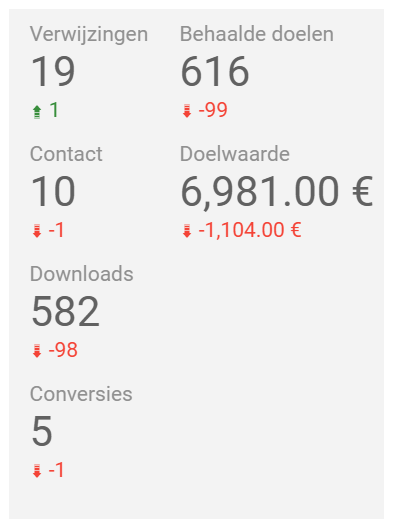
The first benefit is gaining insight into all possible website actions and the value they have. This step forces you and your team to be specific about what you want to achieve and how you will do it. Even if you don’t have all the answers yet – such as the value of a brochure request – it’s important to assign a value to it. You’ll learn as you go along, and once the first lead generated through the brochure request results in an order, the value increases. This approach also keeps you vigilant about tracking and following up on all website results. After a month or quarter, you’ll be able to determine the value more accurately. Adjusting the value based on your evolving understanding becomes straightforward with this approach.
The second benefit is that you can suddenly compare website efforts with other marketing efforts, such as a trade show. What are the costs per lead for the trade show? More importantly, how do you assess the brand or name recognition generated by the trade show? How do you determine that value? Both a trade show and a website have somewhat intangible brand or name recognition values, but they are essential components of ROI in both cases.
The final benefit we discuss here is optimization and insight. If a LinkedIn campaign has a 57% Return on Investment, why not run two of them? And what’s the difference between Google and Facebook traffic?
By associating as concrete and realistic a value as possible with your website visitor, you can approach not only the ROI of a campaign but also the ROI of the entire website. This is crucial in an era where the importance of online marketing is growing, the website is the central tool, and there’s increasing attention to the value of marketing. This approach equips you with the necessary information and hard data to make and justify the right investments in online marketing.